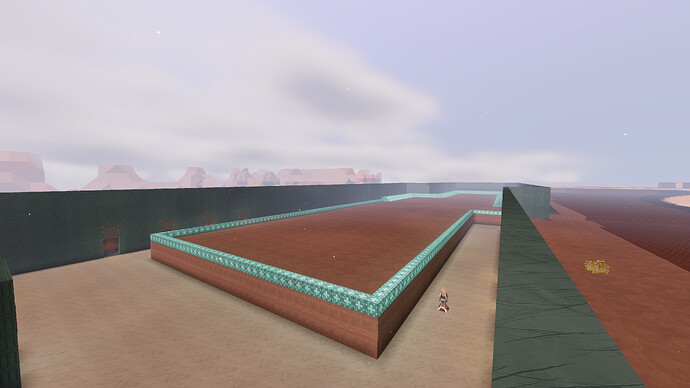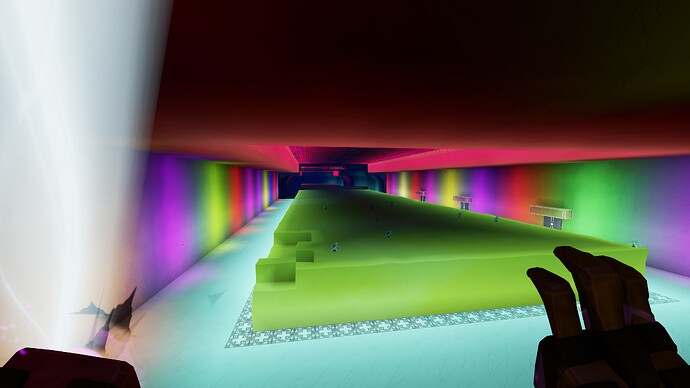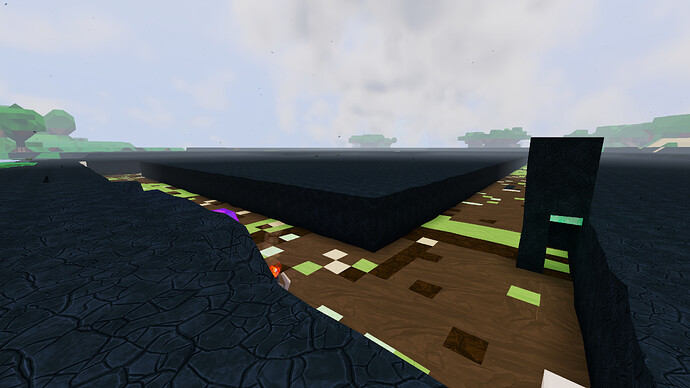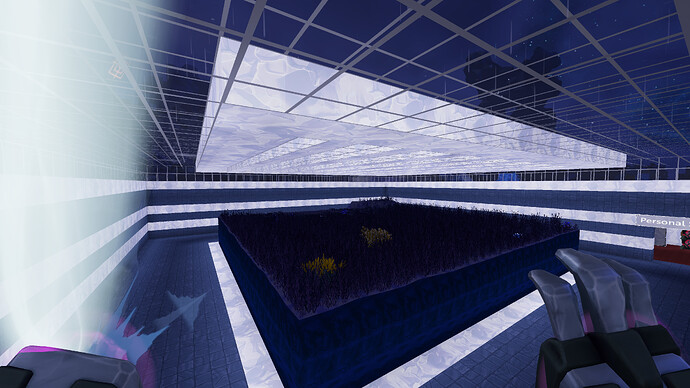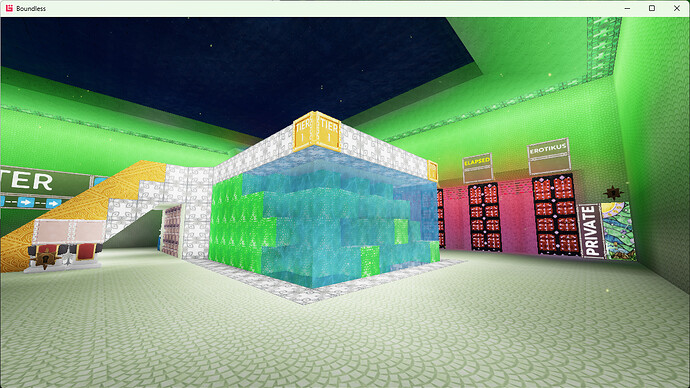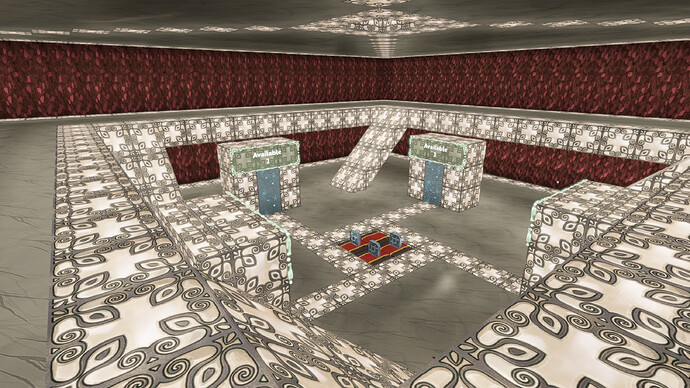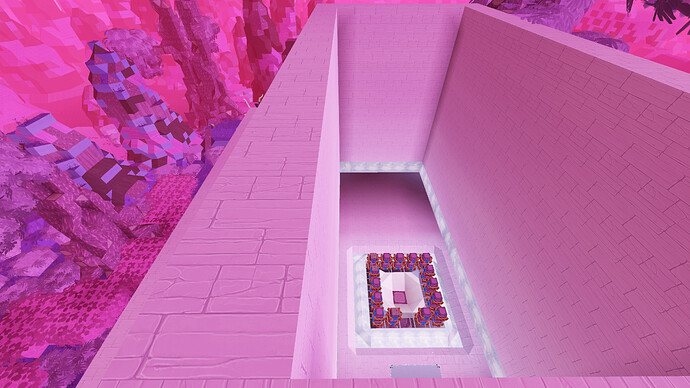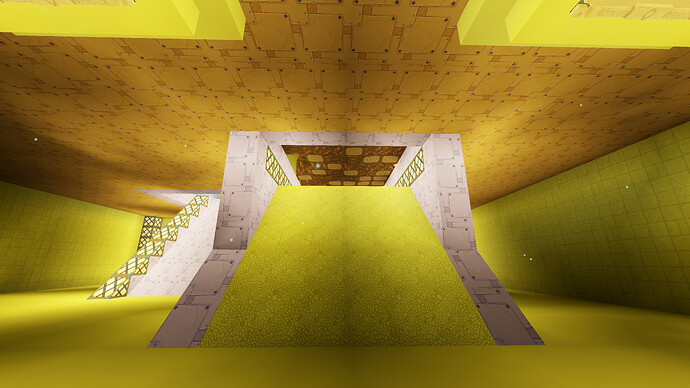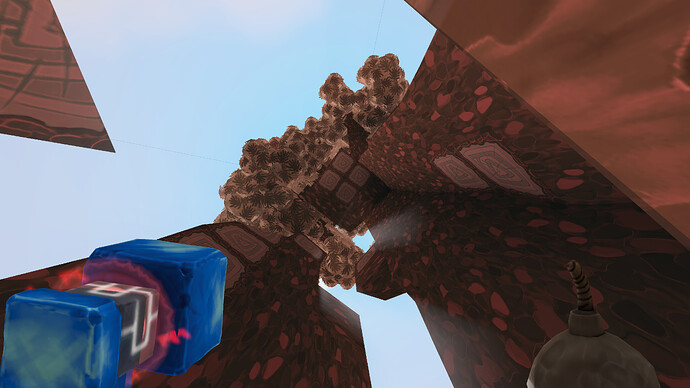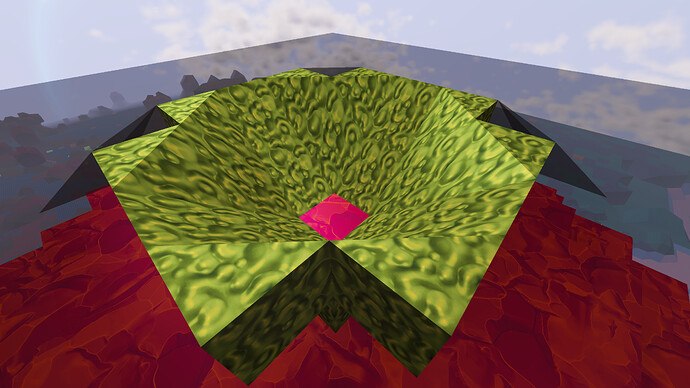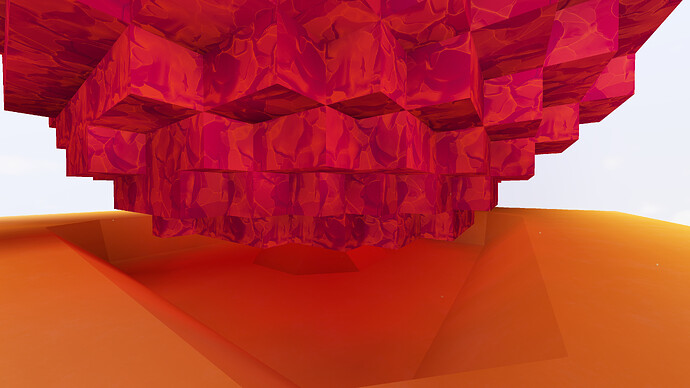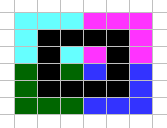OK this is going to be a rambling post. If you’re not interested in block farming or gathering a lot of blocks it will be boring ![]()
First some background for future readers or those who haven’t followed the other chat. Much of this is old news for the majority of current players but I don’t think it’s all laid out into a single primer like this anywhere.
I farm a ton of various blocks in the game. I like to run my machines for XP and materials - honestly more than I like to build or do anything else except maybe mining in game. Ignoring the need for blocks to build with, there are three primary reasons to farm blocks in Boundless:
- Farming for the blocks themselves, to use in crafting or for sale to crafters.
- Farming for “auxiliary drops”. Many blocks in Boundless drop other items when broken.
- Farming for XP, which actually caused me to start this write-up.
The reasons for farming a particular type of block can vary. However most natural blocks provide 2 XP per block when broken. This means that most blocks are farmed for use in crafting, or for their auxiliary drops.
Some of them also have a relatively high value when fed to the chrysominter so if you are looking for coins, consider blocks like growth or sponge. They have valuable auxiliary drops and minting then directly will usually cover your costs - or even provide some immediate profit - without any follow on activities or processing required. Thorns and tangle offer comparable minting value to sponge but offer less valuable drops.
Stone blocks are relatively cheap to process, and the processing offers decent returns in both XP and coin. However rocks are so common from mining, farming the blocks directly is not a common activity. It’s usually done for specific colors and this means large stone farms are uncommon.
Trunk farming has excellent auxiliary drop rates, processing the trunk offers XP and some increased value, or the trunk itself has value as a fuel. This together with use in building and decor means trunk is commonly farmed.
Soil type blocks offer little immediate value but can be sold for a decent price rather than minted as they all have additional uses in crafting. Some like ash or gravel also offer useful auxiliary drops.
There are a couple of exceptions to the 2 XP but these are rarely farmed in bulk. Ancient corruption is 4 XP per block and they’re farmed for the orbs they drop, but the available formations are awful for bulk farming. In some compensation, they the highest minting value for an unprocessed block in the game.
Dark glass provides 8 XP per block but it’s also uncommon to find a formation that is good for efficient 3x3 farming and it has no auxiliary drops. It’s popular as a building block but it’s not used in any other crafting or processing, and offers only an intermediate minting value. As far as I know it’s rarely farmed in bulk.
Gleam, as most will have noticed, is sort of the “Big Daddy” of block farming. There are several reasons for this.
It was originally a rare block, and it gives 8 XP per block when broken. It’s now available in large sphere formations or other merged-biome deposits on most levels of sovereign and many of the exo planets. these two facts make it one of the most popular blocks to farm. Put this together with the fact that it’s useful in crafting a lot of decor and offers at least one processing option that mints directly for decent returns in both coin and additional experience, gleam is possibly the most heavily farmed block in the game.
Now for a look at the types of farms we frequently use. For this post I’m not concerned with the various things people do running around in the wild or getting specific blocks for building/crafting which aren’t useful for bulk harvesting.
Most useful types of block can be bulk farmed in horizontal layers. This can be done using either stationary methods or larger farms that allow more blocks to be harvested between regeneration cycles. Most of them can be found on permanent worlds in layers of three or more, allowing for efficient use of tools forged with the “all-adjacent” or 3x3 effect. This leads to various sized farms in the most familiar format - an isolated area floored at a level to make it convenient to run around and swing a tool at “face level”.
Some large farms with various levels of enclosure/protection:
A walled farm:
Checked for a single block type throughout, and offering modest protection from the local wildlife.
A fully enclosed farm:
Maximum safety (and this one has some extra drops in it)
A fully open “farm”:
This farm just offers a designated area with the promise of no pitfalls or undesirable blocks in the space.
Here are some mid-sized farms. These are usually resources that are harder to isolate in large amounts, or that have been optimized for regenerating the entire farm with a single bomb.
A high-level gravel farm, used for farming saltpetre fragments:
Foliage also offers a variety of auxiliary drops at higher levels:
This low-level clay farm is optimized for quick clearing and regeneration with a single bomb:
Some resources are rarely found in useful sizes on the home worlds but with the various biomes and merge effects on sovereigns there are very efficient farms available for pretty much all drops, if not all block types. Here’s one of my favorite farms:
I have a video showing this farm in action:
This growth farm is small by necessity but with a 3x3 cross section available for an entire plot width it’s actually pretty efficient. I’ve begun isolating other resources in this fashion as well.
Lustrous trunk and gleam are unique among blocks in that they’re both commonly available in formations that allow for efficient vertical (bottom-up or top-down) farming methods for large quantities of blocks.
Other types of trunk are not really useful for bulk farming due to the formations they’re available in, but all trunks share the same auxiliary drops (bark and sap) so most heavy trunk farming is done with lustrous. This can be found in tall trees at any level, and in the large Island Tree biome at higher levels, good for horizontal farming.
A trunk farm for horizontal farming:
A trunk farm for top-down farming:
This farm is open at the top, so that a regen bomb doesn’t push you out of the building. The request baskets allow you to dispose of unwanted trunk as many players farm this strictly for the auxiliary drops.
A trunk farm for bottom-up farming:
Farming a wild trunk ![]()
That axe is pretty blunt, though
Here’s a gleam farm built around a merged set of formations. This provides easy access to a large amount of gleam between regenerations:
This one has been fitted with slide to help stabilize you horizontally while farming from the top down:
I have an older video (this one is silent) showing some top-down farming on a large gleam ball without the slide:
The slide on top enables much faster farming without being pushed off of the gleam ball.
Here is another gleam ball nearby with standing space at an optimal height for bottom-up access:
Here’s a video showing a quick setup of a bottom-up platform on a wild gleamball, and demonstrating the technique:
After considering the availability of a resource, the decision of what kind of farm to use mainly depends on individual taste. The primary compromise people address for all types of block farming is the balance between two factors:
- Cost Per Block
- Blocks over Time
The major secondary factory is your desired level of engagement. If you really want to farm massive amounts of blocks for sale, bulk crafting, or just easy XP it gets pretty boring. Being able to pay some attention to some streaming video or other entertainment on the side helps with this. But the less you want to stay focused on the activity, the more it’s likely to cost.
These costs mainly manifest as a balance between inefficient tool use (taking less than the maximum blocks per durability) or more frequent regeneration - staying in a smaller space or sacrificing some of the available blocks per cycle (and using more bombs) to get maximum blocks per use of your tool. `
Today it was brought to my attention that there’s a third, and very important compromise, in that your choice of farming method can apparently have a significant impact on your XP per block. That’s actually what started this entire write-up.
@Samski and I have been discussing gleam farming, and he’s also been trying different methods. During the course of comparing his results he noticed a loss of XP farming bottom up vs. top down. @Grimdian mentioned a bot-protection causing XP loss for stationary avatars. There’s also a better known protection for repeatedly farming the same block, but that generates on-screen warnings and doesn’t seem to apply when regen farming - it was implemented against an older exploit.
After an initial look, there’s definitely some XP loss (with no warning or indication) under certain conditions. I found discrepancies in actual vs. expected XP not only in vertical farming but also in stationary horizontal farming. At a glance it seems to be causing more XP loss based on how quickly I regenerate and break the blocks, rather than just a fixed loss based on being stationary for a given duration.
I’ll be making more runs to determine if this is consistent, and also check to see if farming methods that keep your avatar in motion (but not walking around) avoid it altogether. I’m also going to take this opportunity to drop a hopeful ping for former developer @lucadeltodecso in case he wanted to stop by and reminisce about any protective systems in the code. ![]()
More to come.
